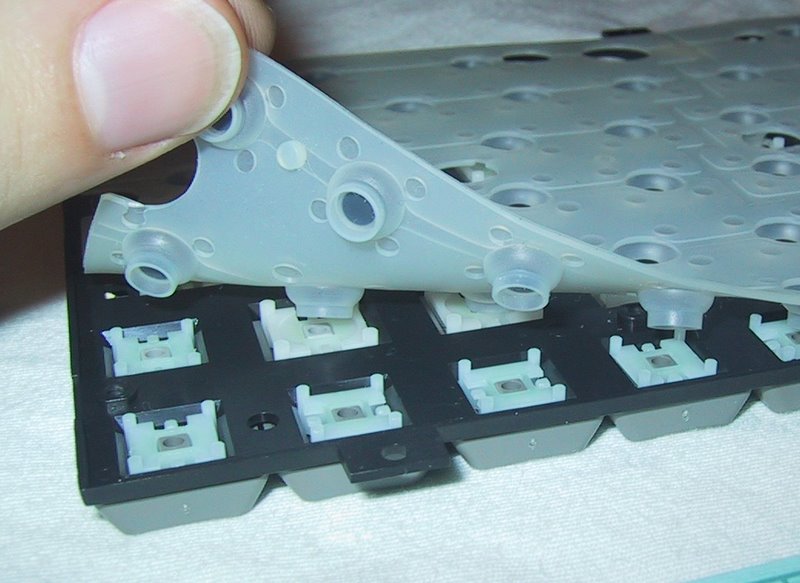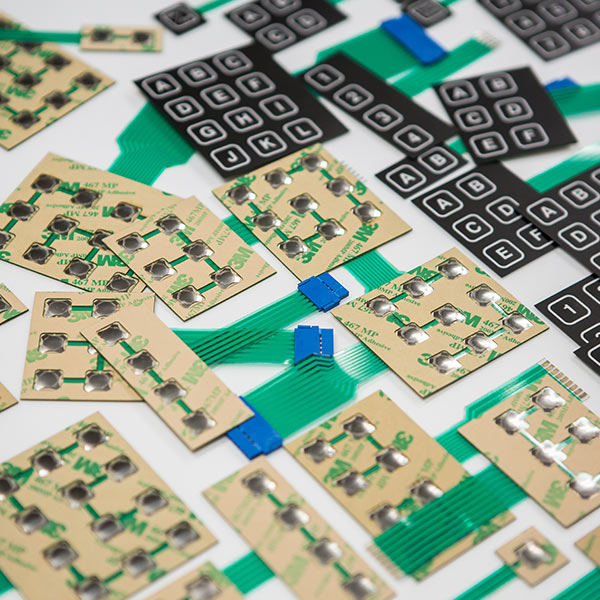The Ultimate Source on Membrane Layer Switches: Style, Capability, and Applications
Membrane layer switches over offer as an intriguing junction of layout and performance, playing a critical role in modern customer interfaces throughout different industries. As we explore the varied applications of membrane layer switches, it becomes noticeable that their versatility and toughness are important in atmospheres ranging from healthcare to customer electronic devices.

Understanding Membrane Layer Buttons
Membrane switches are a sort of user interface technology commonly utilized in numerous electronic devices, identified by their thin, adaptable design and capability. These switches are composed of multiple layers that include visuals overlays, sticky layers, and wiring, allowing a efficient and portable interface for individuals. They can be found in home appliances, clinical devices, and industrial control board, offering a reputable approach for user communication.
Among the primary benefits of membrane layer switches is their capacity to resist pollutants such as dirt and dampness, making them suitable for atmospheres where resilience is essential. Their inconspicuous layout enables smooth assimilation right into different applications, while the adjustable visuals overlays boost customer experience by providing clear visual comments. In addition, membrane layer switches can accommodate a range of modern technologies, such as tactile comments and backlighting, more boosting their use.
The manufacturing process for membrane changes normally includes display printing, lamination, and die-cutting methods, making sure precision and consistency in production. Overall, membrane switches over stand for a efficient and flexible service for modern-day digital gadgets, integrating functionality with visual charm in interface design.
Trick Parts and Design Elements
A selection of crucial components and layout aspects come together to develop an efficient membrane button. At the core, the graphic overlay offers both useful and visual objectives, providing an easy to use interface while shielding interior elements from ecological elements. The choice of products, commonly polyester or polycarbonate, affects longevity and responsive responses.
Underneath the overlay, the sticky layer guarantees the button sticks safely to the substrate, which can be glass, plastic, or metal. The spacer layer is crucial, as it preserves the required gap in between the circuit and the overlay layers, enabling reliable actuation. Membrane Switches. Circuit traces, typically made from conductive ink or adhesive, are published on a versatile substrate, allowing electric signals to be transmitted when pressure is applied
Design factors to consider also include the plan of responsive domes or embossing that supply physical responses to the customer, improving the total experience. Additionally, the design and spacing of the buttons should be optimized for simplicity of usage, ensuring that individuals can browse the interface without effort. On the whole, these components and layout aspects work synergistically to produce a dependable, functional membrane layer button customized to specific applications.
Performance and Procedure Device
At the heart of effective functionality for membrane changes exists their functional device, which facilitates individual communication via a straightforward yet efficient design. These buttons run on the concept of stress activation, where a customer uses force to a designated area of the button (Membrane Switches). This activity compresses the layers of the switch, completing an electrical circuit that sends a signal to the connected gadget
The building normally consists of a top graphic layer, an adhesive spacer layer, and a bottom circuit layer, which jointly develop a robust user interface. When stress is used, the leading layer falls down versus the bottom circuit layer, allowing conductive traces to attach. This style not only allows clear tactile feedback yet additionally makes sure durability and reliability, as the buttons are usually immune to dust and moisture.
Moreover, the convenience of membrane layer changes enables assimilation with numerous innovations, including LED indications and microcontrollers, improving their functionality. By giving a structured interface that minimizes mechanical wear, membrane layer changes continue to be a preferred choice in applications varying from consumer electronics to commercial devices, ensuring optimum performance and user fulfillment across diverse settings.
Kinds of Membrane Buttons

One more substantial category is lit up membrane buttons, which incorporate backlighting to improve visibility in low-light conditions. These switches are typically used in control panels and dashboards where clear visibility is essential.
In addition, there are personalized membrane switches made to satisfy details dimensional, visual, and functional needs. These customizations can include distinct forms, shades, and layouts, permitting seamless integration right into numerous devices.

Applications Throughout Numerous Industries
Just how do membrane layer buttons improve performance across diverse industries? These versatile components are integral to countless applications, supplying structured individual interfaces and robust performance. In the clinical market, membrane layer buttons play an essential role in devices such as diagnostic equipment and person monitoring systems, where reliability and ease of cleansing are paramount. Their capability to hold up against extreme settings makes them perfect for laboratory instruments and surgical tools.
In the vehicle market, membrane buttons are frequently used in dashboards and control board, supplying intuitive controls that improve chauffeur safety and security and convenience. The consumer electronic devices field additionally takes company website advantage of their over here lightweight and adjustable functions, enabling smooth layouts for smartphones and home appliances.
In addition, membrane buttons find applications in industrial automation, where they add to reliable machinery operation and tracking systems. Their resistance to dirt and dampness ensures performance popular problems (Membrane Switches). Additionally, the food and beverage market utilizes membrane layer buttons for equipment control, where hygiene and longevity are crucial
Final Thought
Finally, membrane changes represent a crucial development in interface modern technology, identified by their unique design and performance. Their crucial elements, consisting of visuals overlays and circuit traces, add to their functional performance through pressure activation. The convenience of membrane changes facilitates their application across diverse markets, from clinical devices to consumer electronics. This extensive understanding strengthens the value of membrane layer buttons in boosting item use and durability in modern technical settings.
Membrane layer changes serve as an appealing intersection of layout and performance, playing a crucial function in contemporary user interfaces throughout different sectors.Membrane switches are a type of customer interface innovation extensively made use of in different digital gadgets, characterized by their slim, adaptable style and functionality.At the heart of efficient functionality for membrane layer switches over exists their functional device, which assists in individual communication with a straightforward yet effective design. These switches operate on the concept of pressure activation, where a customer applies pressure to a designated location of the button.In final thought, membrane layer changes stand for a vital innovation in individual more tips here interface modern technology, defined by their distinct style and capability.